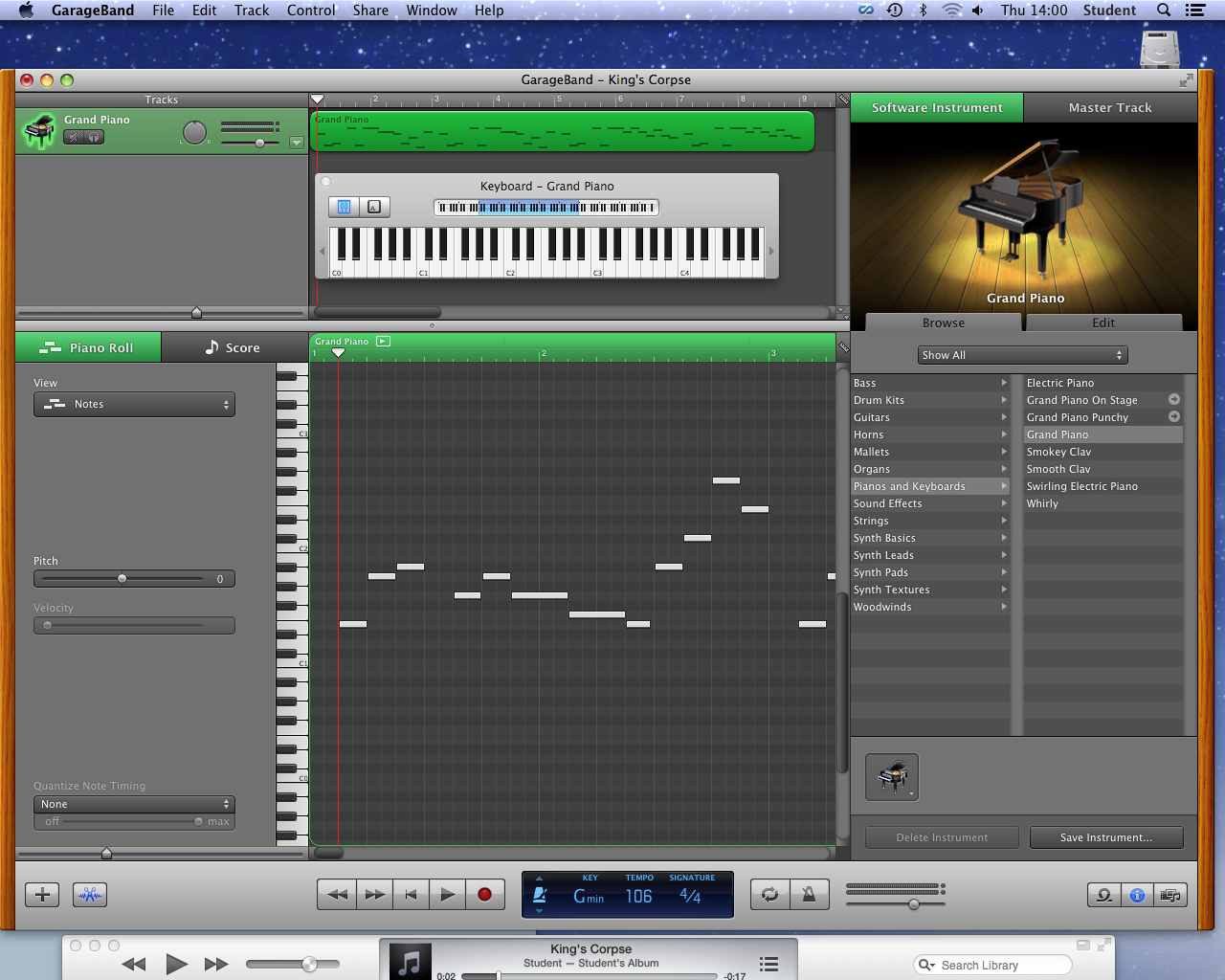I had never thought of the killer's appreciation for music in this sense before, but he is completely right. The scariest part of the psyche of a serial killer is that they are intelligent, rather than barbaric creatures and are therefore supposedly driven by human, intellect based motives.
I sent him the demo, but he did not respond, so I created my own on garageband. I had never used the software so I was a little slow to begin with, but once I realised that the interface was similar to Cubase, a software I do use, I was able to pick up enough to write the music. I had the riffs on guitar already planned, so it was just a case of inserting notes and making sure they were timed properly. The piano samples were mostly keyboard, synth based instruments, so they didn't fit the classical sound, the only one that did was the grand piano, hence my use of it.
 First off, I started to tab out the main melody, note for note, choosing their duration as according to how I play them on guitar. I had a couple of issues grasping the notes, as the original composition is played in the tuning Drop C, which alters where each note on the string is. I initially tabbed the first note as an F♯, because in Standard tuning, that is how it would be played. I noticed this during playback and all notes are now correct.
First off, I started to tab out the main melody, note for note, choosing their duration as according to how I play them on guitar. I had a couple of issues grasping the notes, as the original composition is played in the tuning Drop C, which alters where each note on the string is. I initially tabbed the first note as an F♯, because in Standard tuning, that is how it would be played. I noticed this during playback and all notes are now correct.
I kept adding notes where they were played on the demo. I noticed that the notes do not fit any mode (scale within a key) I am aware of, but that contributes to my advantage, as this adds a dissonant sound (talked about earlier in the post). The closest I came to was G Phrygian, a minor mode. I was never focused on it fitting a specific mode, as I personally believe they restrict the piece, and the music I have composed that does not follow modes sound exactly how I wanted them, and I don't think anything else should matter.
 Once the melody was complete, I added the A chord, which is the first note played on the demo, but I didn't add it as I wanted to experiment with the placement of the chord. In this picture, the chord is highlighted. I thought about adding other notes that fit the chord, but the idea of the piece is that it's rather isolated, to match the killer. The chords seemed not only too full for this, but they also distracted the audiences attention from the sinister melody.
Once the melody was complete, I added the A chord, which is the first note played on the demo, but I didn't add it as I wanted to experiment with the placement of the chord. In this picture, the chord is highlighted. I thought about adding other notes that fit the chord, but the idea of the piece is that it's rather isolated, to match the killer. The chords seemed not only too full for this, but they also distracted the audiences attention from the sinister melody. The sample had a bit too much of the actual noise of the keys being hit for my liking, so I tried a technique which works a lot of the time to make guitars sound more full and give a bit more clarity. The technique involves recording several takes and panning them in different locations, making the guitar sound fuller and because there are multiple takes, some background noise that would be audible in one take, is not present. I copied and pasted the entire piece into a new, identical piano track. I panned one mostly left, and one mostly right, and turned the volume down on both tracks.




No comments:
Post a Comment